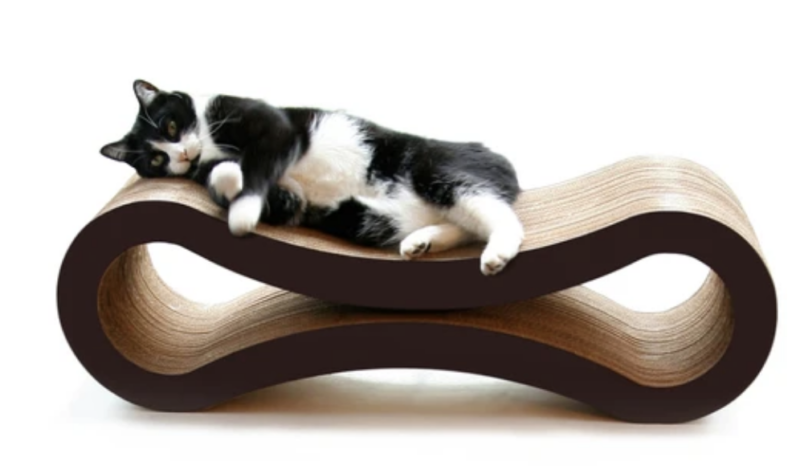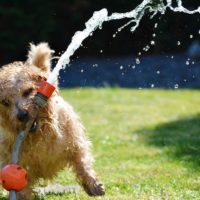Pets and water sprays
People often tell me that they use a water spray to correct their pet’s behaviour. They say it works, as the pet stops doing whatever unwanted behaviour they were doing at the time of the spray. Let me give you the reasons why a water spray cannot help your pet’s behaviour in the long term and why it will certainly not improve your relationship with your pet.

Why it’s unacceptable to use a water spray on your pet
1. When you use a spray and your pet dislikes it, your pet associates this with you. Is this the relationship you wish to have with your pet? That your pet fears your approach? Using punishment on an animal is not a desired behaviour technique.
2. Some animals actually enjoy the spray of water. To them it is a game, thus any attempt to use a water spray as a punishment for “bad” behaviour is useless.
3. What happens when you are not there? Does your pet think back to the water spray and decide that it will not perform the behaviour? Or do they go for it, knowing that you are not around? The water spray can only be used when you are there to inflict it.
4. You have to carry a water bottle spray around with you at all times. It probably it quite inconvenient to have a water bottle on your person at all times. For instance:
- In the park as you walk your dog
- In bed when your cat wakes you

5. Water sprays interrupt a behaviour. This is the reason that people think it works. Spray and the pet stops what they were doing. Has your pet learned a better behaviour? No and they probably have not ever learned that the behaviour they were doing doing was wrong. Healthy pets don’t perform wrong behaviours. They behave in ways that work for them.
- Cats scratch furniture to leave their scent and sharpen their claws. They still need to do these things, even if you spray them for clawing your furniture.
- Dogs who bark at passing people or dogs and get sprayed may associate the spray with the intruding person. Next time they see the person, they may want to attack.
6. A water spray may even confuse your pet. If they are performing a behaviour that they need to do (cats scratching, dogs barking) and you spray them, this may completely shock your pet. Just imagine that it is you being sprayed… You are talking to your partner, to offload your feelings about your day. As you get to the most intense part of your description, your partner sprays you with their water bottle. Did you learn what you should have been doing instead of annoying your partner with your talk? Or did you simply feel hurt and confused?
7. Whether you use a water spray or not, it is still up to you to teach your pet the behaviours that you would like them to perform. This means actively teaching, using positive reinforcement, the desired behaviour.
So what can you do, instead of punishing your pet with the use of a water spray bottle?
- Start to train your pet. Teach them to perform desirable behaviours. Set them up for success. Think of an alternative behaviour that still satisfies your pet’s needs.
- Teach your cat where you would like them to scratch by placing their scratching posts in the areas that they like to scratch and ensuring your cat goes into that area regularly and at appropriate times.
- If your dog is annoying you, manage them by placing them on a lead, then give them some other engaging activity, so they are less inclined to bark, jump or whatever else it is that you dislike.
- Just like you had to be accurate with your water spray timing, you need to be accurate with your training. Our pets learn best when the are rewarded for their behaviour immediately. This is why trainers often use clickers. But you dont have to use a clicker. When your pet is doing behaviours that you like you can say an excited “Yes” or any other positive word that you wish to use. You can then follow this up with a treat, praise or a pat. This is a bridging word and helps teach your pet that their behaviour is desired.
- Be creative. Think of your pet’s needs and satisfy these with exercise (both physical and mental) both within your home and outdoors, if you take your pet outside.
I like to say that there is no such thing as “bad” behaviour. There is, however, behaviour that humans do not wish to happen. It is up to us to teach our pets what we would like them to do. Less water spray, more thought please. Love your pets!

About the author
Dr Jo Righetti is an animal behaviourist who tries to do everything positively with pets. She used water sprays to water her plants!
More pet behaviour articles
- Top 10 Problem Pets – and Problem Pet Behaviour
 Are you frustrated, angry or puzzled y your pet’s behaviour? Here’s your guide to the top 10 problem pets and problem cat behaviour and dog behaviour…
Are you frustrated, angry or puzzled y your pet’s behaviour? Here’s your guide to the top 10 problem pets and problem cat behaviour and dog behaviour… - The Lazy Guide to Dog Training
 The Lazy Guide to Dog training by animal behaviourist (and lazy dog trainer!) Dr Jo Righetti… This blog post is part of the 2018
The Lazy Guide to Dog training by animal behaviourist (and lazy dog trainer!) Dr Jo Righetti… This blog post is part of the 2018 - Road tripping with a dog with car anxiety
 If your dog is anxious while you travel, these tips, from Sarah Archer at Your Best Digs, may help… Road tripping with a dog
If your dog is anxious while you travel, these tips, from Sarah Archer at Your Best Digs, may help… Road tripping with a dog - Relaxing your pets with music, audiobooks and movies
 Relaxing your pets with music, audiobooks and movies Is it possible to relax stressed pets by playing them music, audiobooks or watching movies? Dr
Relaxing your pets with music, audiobooks and movies Is it possible to relax stressed pets by playing them music, audiobooks or watching movies? Dr - Predicting the behaviour of rescue dogs. New Research to Improve Adoptability
 Predicting the behaviour of rescue dogs : It’s difficult to compare a shelter to a sofa! Are you thinking about adopting a rescue dog
Predicting the behaviour of rescue dogs : It’s difficult to compare a shelter to a sofa! Are you thinking about adopting a rescue dog - Pets and water sprays: No way!
 Pets and water sprays People often tell me that they use a water spray to correct their pet’s behaviour. They say it works, as
Pets and water sprays People often tell me that they use a water spray to correct their pet’s behaviour. They say it works, as - How to Stop Your Dog from Jumping and Climbing the Fence
 How to Stop Your Dog from Jumping and Climbing the Fence Has your dog ever escaped from your backyard? Some dogs are pure escape
How to Stop Your Dog from Jumping and Climbing the Fence Has your dog ever escaped from your backyard? Some dogs are pure escape - How to Keep Pets Calm in Stressful Situations
 All pets get stressed at times and some are in a constant state of anxiety, so it helps to know how to keep pets
All pets get stressed at times and some are in a constant state of anxiety, so it helps to know how to keep pets - Does The Anxiety Wrap work?
 Does the Anxiety Wrap Work? Does your dog suffer from anxieties, fears or phobias? Stress is common in our pet dogs and most owners
Does the Anxiety Wrap Work? Does your dog suffer from anxieties, fears or phobias? Stress is common in our pet dogs and most owners - Did You Know That Desexing your male dog could result in unwanted behaviour?
 Desexing your male dog could result in unwanted behaviour! Dog owners: Do you have a male dog? Is your dog desexed (neutered) ? At
Desexing your male dog could result in unwanted behaviour! Dog owners: Do you have a male dog? Is your dog desexed (neutered) ? At


















So, how do you stop cats from getting on the bench and the dining table even worse the stove ?
I’ve been using the water spray so I thought effectively, I only actually sprayed and wet them once, now all i do is pick up the bottle , they seem to have got the message .
Just wondering a better way ?
Animals can learn, sometimes, from punishment but it rarely builds the bond with their humans. Instead they learn avoidance. Since being high is a natural behaviour in cats, it is best to satisfy that urge by providing high spaces that are more desirable than stoves, dining tables etc. Provide food, boxes or attention on appropriate shelves, windows sills and surfaces to encourage your cats to use them.
.
I totally agree with this post. Most dogs enjoy the water so spraying water on them for punishment just is not the best way.
We adopted Miss Fleur from a foster home when she was 1, and she had been trained with a water sprayer. As a result we didn’t really need to, but on the odd occasion it has been used, she HATES it. Seth on the other hand (who has had a difficult adjustment period, full stop! Lots of climbing screens, jumping on tables and counters etc) just looks at us as though we are stoopid if we use a water sprayer. He doesn’t care a jot so as a result we don’t use it anymore for him either!
They are all such different personalities. I love it!
I was going to try water spray especially when I take my dog for a walk, but after reading this looks like I am going to have to investigate some more. Thanks for the information about water spray.
Try to teach your dog how you would like them to behave. If walking is a problem, start at home, even in your lounge room. Put a lead on your dog and walk them around the home. Offer a treat and/or praise for walking by your side. Good luck 🙂